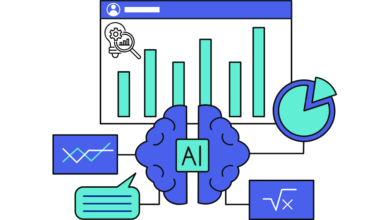Within the next three years, the implementation of AI will become pivotal for efficient and competitive supply chain management —if it’s not already. As McKinsey recognises, “AI’s ability to analyse huge volumes of data, understand relationships, provide visibility into [supply chain] operations, and support better decision making makes AI a potential game-changer.”
While the use case for AI has been made, the devil is always in the detail. AI is somewhat amorphous, with no single definition, open to myriad interpretations. In some ways, this is the beauty of it. The idea that AI can be anything and do what you need it to has led to many companies offering solutions dressed as AI, answering any problem you can dream of. The issue is knowing whether that AI (if that’s what they are really offering) is any good. There are no standards for AI. No labels, no ratings, no metrics. It becomes guesswork – no one knows what the measurements are or how to define accuracy.
Separating the wheat from the chaff
AI is nourished by data. No matter how shiny the casing, how enticing the pitch, AI is only as good as its data. No matter how sophisticated the AI, shoddy data renders it useless. Within supply chain logistics, any kind of advanced analytics and resulting automation starts with a foundation of clean, encompassing, quality transportation visibility data. It is estimated that 20-30% of data in the supply chain is invalid. Some solutions providers take this seriously and have created machine-learning techniques for data cleaning, ensuring a solid foundation for proper visibility and data analysis.
For example, without the highest caliber of data quality, a real-time transportation visibility (RTTV) platform can’t produce the essential insights for supply chain management – dynamic Estimated Time of Arrivals (ETAs), proactive exception management, supplier visibility, and collaborative visibility.
Yet, many supply chain execs don’t fully understand the baseline data requirements to leverage supply chain analytics effectively. This isn’t their fault. It requires organisational focus to achieve data literacy. However, it does leave them in a sticky situation when seeking to evaluate data-led solutions for their most pressing problems.
With the promise of AI riding high, how can supply chain leaders make sure they’re not sold snake oil? How do you select the right AI solution?
Even the most impressive square peg won’t fit a round hole
Choosing an AI solution starts with a question. What do you actually want from it? Sounds simple enough, but solutions are often sought and sold without hitting the nail on the head of the real issue.
For example, some supply chains are reliant on incredible accuracy. Imagine a supplier who needs to know when trucks will arrive at the warehouse so that staffing can be determined, for example. Do they need three colleagues unloading trucks this shift? Or do they need to have one staff member unloading trucks this shift and six on the next? When do you make the shift decisions? The morning before the shift starts or at the beginning of the week? When do you alert staff?
All those different scenarios require something a little different from the AI. It’s not all about accuracy. It is also about timeliness and responsiveness. You are looking for a solution that helps you decide where and how to allocate resources and how often you can make those decisions. The lesson is, what are the AI characteristics that matter, and what is the evidence that any particular solution answers these requirements? Buyers need to be specific and discerning when assessing any AI solution. Similarly, they need to work with suppliers who can work with them to determine the real crux of the issue and offer flexible solutions that fit their needs and model.
For example, the way the AI works for a low-cost retailer is likely to be focused primarily on cutting costs. However, a luxury brand will often prioritise the quality of service and speed. The simple message is that AI is not one size fits all. Unfortunately, too many of those seeking solutions start by seeking the ‘best’ AI, not considering whether that brand of AI is the best answer to their specific problem.
As McKinsey highlights, the range of features offered by AI are expansive, “The good news is that AI-based solutions are available and accessible to help companies achieve next-level performance in supply-chain management. Solution features include demand-forecasting models, end-to-end transparency, integrated business planning, dynamic planning optimisation, and automation of the physical flow—all of which build on prediction models and correlation analysis to better understand causes and effects in supply chains.”
Similarly, it is no surprise that AI and its sister, augmented data intelligence, appeared in the latest rundown of Gartner’s Top Supply Chain Technology Themes of 2021. Through 2022, however, supply chain leaders must cut through the hype and hyperbole to get to the truth behind the headlines. What is this AI fed, and does it do the job we need it to? Or, when you draw back the curtain, will you be met with the bells and whistles of disappointment?




